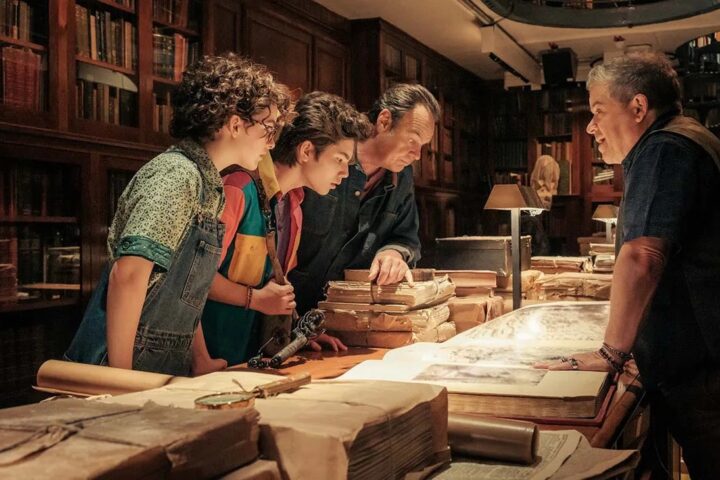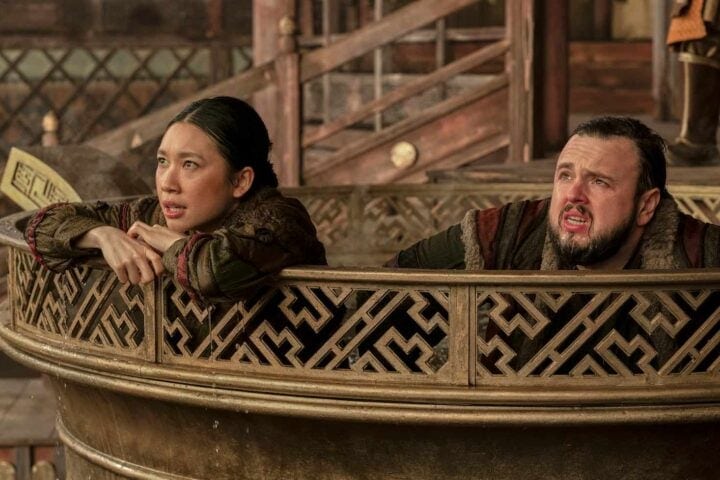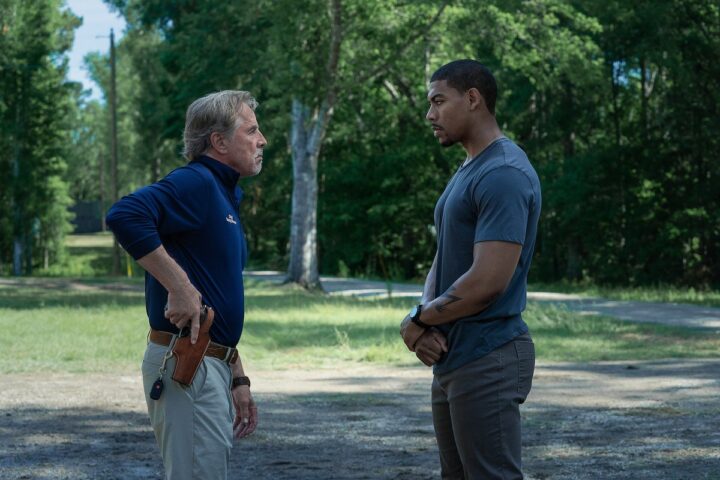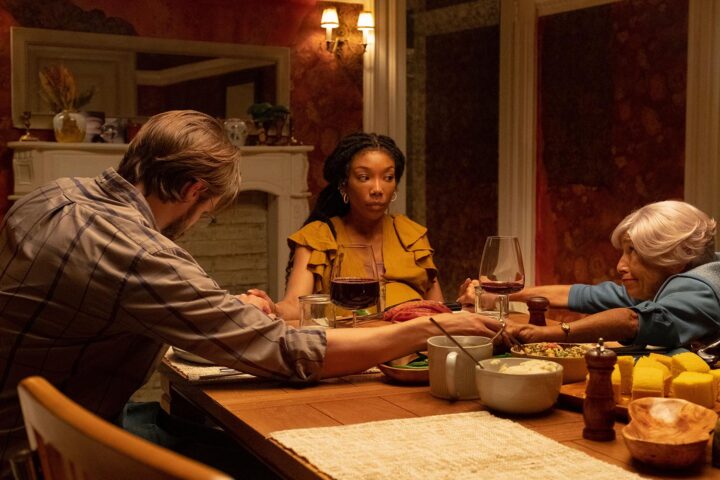The first thing you’ll likely notice about His Three Daughters is the way the characters talk. Framed against a white wall in her father’s (Jay O. Sanders) Lower East Side apartment, an arms-crossed Katie (Carrie Coon) insists that she and her sisters set any differences aside, even as she begins to grumble about the “do not resuscitate” order that Rachel (Natasha Lyonne) didn’t get signed. It’s a capital-M monologue that Coon delivers in a breathless and stilted cadence, leaving no room for Rachel to speak. By the time Christina (Elizabeth Olsen), the youngest of the sisters, hunkers down at the dinner table for her turn in the spotlight, you may be excused for thinking you’re watching a theater group putting their spin on a relay race.
The stagey quality makes a certain amount of sense for writer-director Azazel Jacobs’s film. After all, Katie and Christina are putting up fronts about their emotions as they await their father’s death inside the childhood home they’ve rarely visited since moving out. Rachel, though, has been staying there since before their father’s health declined, and she’s borne the brunt of his illness. More than her two sisters, she’s prepared for his death, and as such there’s a sense that she has nothing to perform. And that she speaks more naturally marks her as an outcast among the sisters, even without the clear enmity between her and Katie in particular.
His Three Daughters sneaks up on you. For as chatty and monologue-forward as Jacobs’s screenplay may be, it conveys so much through absence and suggestion. It’s equally defined by what the characters say as it is by what they don’t say, by what they’re avoiding by sucking up all the oxygen in the room. Everything seems to exist within a present-day bubble of grim anticipation, to the point where the camera only leaves the apartment to follow Rachel going out to buy weed or to smoke it on the bench in front of the building, so as to not trigger Katie’s ire.
This is a film about avoidance, or at least one about attempted avoidance. Katie, Rachel, and Christina aren’t prone to reminiscing about the past, which clearly informs their squabbling. The real source of animosity between them doesn’t become apparent until much later, around the point that you may wonder whether an actor has even been cast in the role of the father, who scarcely appears on screen. For much of the film, he’s functionally a room that others disappear into or emerge from, and the daughters rarely discuss what he was like before the illness.
Jacobs’s stylistic decisions can be slyly profound. Katie and Christina speak at one point in gibberish to one another, emphasizing their bond as a language unto itself. Later, Christina calls attention to her father’s absence from the space of the little world that the sisters occupy via dialogue that’s one fourth-wall break away from being the epitome of self-referentiality.
Such moments are distracting, but that’s the point: to emphasize the barriers between the characters, from how they never quite come down to how they never put the sisters at ease. The film wouldn’t be so affective without those elements, like the final monologue that lets everything click into place like a missing piece in the center of a puzzle, telling us so much about characters who spend that one, wondrous moment saying everything and nothing at once.
Since 2001, we've brought you uncompromising, candid takes on the world of film, music, television, video games, theater, and more. Independently owned and operated publications like Slant have been hit hard in recent years, but we’re committed to keeping our content free and accessible—meaning no paywalls or fees.
If you like what we do, please consider subscribing to our Patreon or making a donation.






